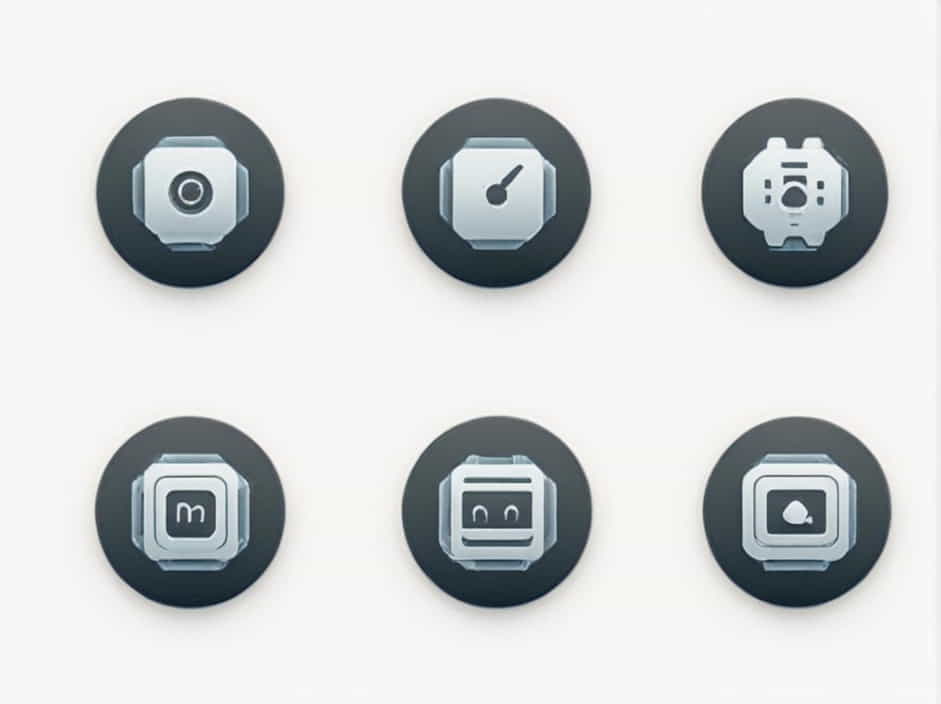Perceptual computing is an innovative approach to human-computer interaction (HCI) that enables machines to understand and respond to human behavior in a more intuitive way. It integrates technologies such as gesture recognition, facial recognition, speech processing, and augmented reality to create seamless user experiences.
The main purpose of perceptual computing is to bridge the gap between humans and digital systems by making interactions more natural, responsive, and immersive. This technology has applications in various industries, including healthcare, gaming, virtual reality, and smart devices.
In this topic, we will explore the primary goals of perceptual computing and how it is transforming the way we interact with technology.
1. Enhancing Human-Computer Interaction
The primary goal of perceptual computing is to make interactions between humans and machines more natural and intuitive. Traditional interfaces like keyboards and mice limit the way users communicate with computers.
How Perceptual Computing Enhances HCI
✔ Gesture Recognition – Allows users to control devices with hand and body movements.
✔ Voice Commands – Enables hands-free interaction through speech recognition technology.
✔ Facial Recognition – Identifies users and adapts the experience based on their preferences.
Real-World Applications
- Gaming Industry – Motion-based gaming systems, such as VR headsets and motion controllers, provide immersive experiences.
- Smart Devices – AI assistants like Alexa, Google Assistant, and Siri use voice recognition to interact with users.
- Automotive Industry – Cars with gesture-controlled dashboards improve driver safety and convenience.
By reducing the reliance on traditional input methods, perceptual computing creates a more engaging and user-friendly experience.
2. Improving Accessibility and Inclusivity
Perceptual computing plays a crucial role in making technology more accessible to individuals with disabilities. By replacing traditional input methods with gesture, voice, and facial recognition, it enables people with physical limitations to interact with digital systems effortlessly.
How Perceptual Computing Improves Accessibility
✔ Voice-Controlled Interfaces – Helps individuals with mobility impairments operate computers and smart devices.
✔ Eye-Tracking Technology – Allows users to navigate interfaces using eye movements.
✔ AI-Powered Sign Language Recognition – Translates sign language gestures into text or speech for better communication.
Impact on Different Sectors
- Healthcare – Patients with disabilities can use voice and gesture commands to control wheelchairs and assistive devices.
- Education – Perceptual computing enables adaptive learning environments for students with special needs.
- Workplace Inclusion – Employers can implement accessible technology solutions to create an inclusive work environment.
This technology ensures that no one is left behind, making digital interactions available to everyone.
3. Enhancing Security and Authentication
Another key purpose of perceptual computing is to improve security and authentication using biometric recognition technologies. Unlike traditional password-based authentication, facial and voice recognition provide a higher level of security.
How Perceptual Computing Strengthens Security
✔ Facial Recognition for Authentication – Reduces security risks by using unique facial features to verify users.
✔ Voice Recognition for Access Control – Prevents unauthorized access through biometric voice authentication.
✔ Iris and Retina Scanning – Provides an ultra-secure method for identity verification.
Applications in Cybersecurity
- Mobile Devices – Many smartphones use face unlock technology as an alternative to PINs and passwords.
- Banking and Finance – Online banking apps utilize voice and facial recognition to verify transactions.
- Corporate Security – Companies implement biometric access control systems to protect sensitive data.
With perceptual computing, security measures become more advanced, reliable, and user-friendly.
4. Creating More Immersive Digital Experiences
Perceptual computing enhances virtual and augmented reality (VR/AR) by enabling natural user interactions within digital environments. It combines gesture tracking, eye movement detection, and haptic feedback to create more immersive experiences.
How Perceptual Computing Enhances Immersion
✔ Hand and Finger Tracking – Allows users to interact with virtual objects without controllers.
✔ Eye-Tracking Technology – Enables dynamic focus adjustments in virtual environments.
✔ Haptic Feedback – Provides realistic touch sensations in digital interactions.
Impact on Various Industries
- Gaming – VR games like Half-Life: Alyx use motion tracking for realistic gameplay.
- Education – AR-based learning applications provide interactive lessons for students.
- Retail – Virtual try-on tools allow customers to visualize clothing and accessories before purchasing.
With perceptual computing, digital interactions become more engaging, realistic, and lifelike.
5. Advancing Artificial Intelligence and Machine Learning
Perceptual computing is closely linked to artificial intelligence (AI) and machine learning (ML), allowing computers to learn and adapt based on human interactions. It enables machines to recognize patterns in voice, facial expressions, and gestures, making systems more responsive.
How AI and ML Improve Perceptual Computing
✔ Personalized User Experiences – AI-powered systems adapt to user preferences over time.
✔ Real-Time Data Processing – Enables faster decision-making based on human inputs.
✔ Continuous Learning – ML algorithms improve accuracy in recognizing speech, emotions, and movements.
Examples of AI-Powered Perceptual Computing
- Smart Assistants – AI chatbots and virtual assistants learn user behavior to provide better recommendations.
- Healthcare Diagnostics – AI-powered perceptual systems detect facial symptoms of medical conditions.
- Automated Customer Support – Chatbots use voice recognition to assist customers efficiently.
By integrating AI and ML, perceptual computing becomes smarter, more adaptive, and capable of real-time learning.
The main purpose of perceptual computing is to create seamless, natural, and intelligent interactions between humans and technology. By leveraging gesture recognition, voice commands, facial recognition, and augmented reality, it enhances accessibility, security, immersion, and AI capabilities.
This technology is shaping the future of gaming, healthcare, education, retail, and cybersecurity, making digital experiences more human-like and engaging. As perceptual computing continues to evolve, it will revolutionize the way people interact with technology in everyday life.
